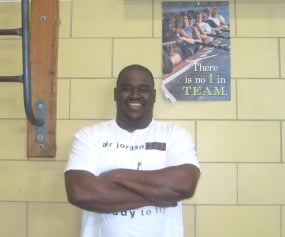Physical Education
Overview:
Montgomery County Public Schools in the process of improving its overall educational curriculum by implementing standards-based grading and reporting across its entire educational spectrum and its Physical Education program will play a very important role in this new improvement. What’s the difference?
Traditional Grading and Reporting:
- Grading is norm-referenced
- Often criteria are unclear or assumed to be known
- Grading compares each student’s performance to that of other students
- Grades are based on a bell-shaped curve
- Learning becomes highly competitive
- Learning becomes a game of winners and losers.
Standards-based grading and reporting:
- Grades are aligned to standards and reflect what a student knows and can do in relation to grade-level/course expectations.
- Grades provide clear communication to inform parents, students, and others about student performance as related to grade-level/course expectations.
- Learning skills are reported separately from academic grades.
- Grades are based on multiple and varied measures over time.
- Extra-credit is not used.
What will your child will learn this year?
Kindergarten is a simple and gentle introduction into Physical Education. We will focus on moving using the loco motor skills of hopping, jumping, skipping, running, and galloping in general space safely and understanding their own and respecting their classmates’ personal space. Our Health component will be learning how and why our body changes when we exercise i.e., heart rate increase, lungs breathe deeper and faster, and our skin to starts to sweat.
First and Second graders will focus on mastering the loco motor skills. Moving in general space via different Pathways, Directions, and at various Levels will also be introduced. Throughout the year we will work on Throwing and Catching and we will finish up with Striking with Hands, Striking with Feet, and Striking with Implements. For our Health component will dig a little deeper into the understanding of the physiological effects of exercise on the human body.
Third, Fourth, and Fifth graders, will begin to learn how to set achievable Goals for themselves, begin the process of mastering Throwing and Catching, learn the Forearm Pass, and learn how appropriate social skills will be an asset to them as they grow throughout their childhood and into adulthood. They will learn the Health-Related Fitness Components of defining aerobic activity and apply methods for measuring heart rates, identifying muscular strength and muscular endurance activities, and identifying activities involving flexibility.

